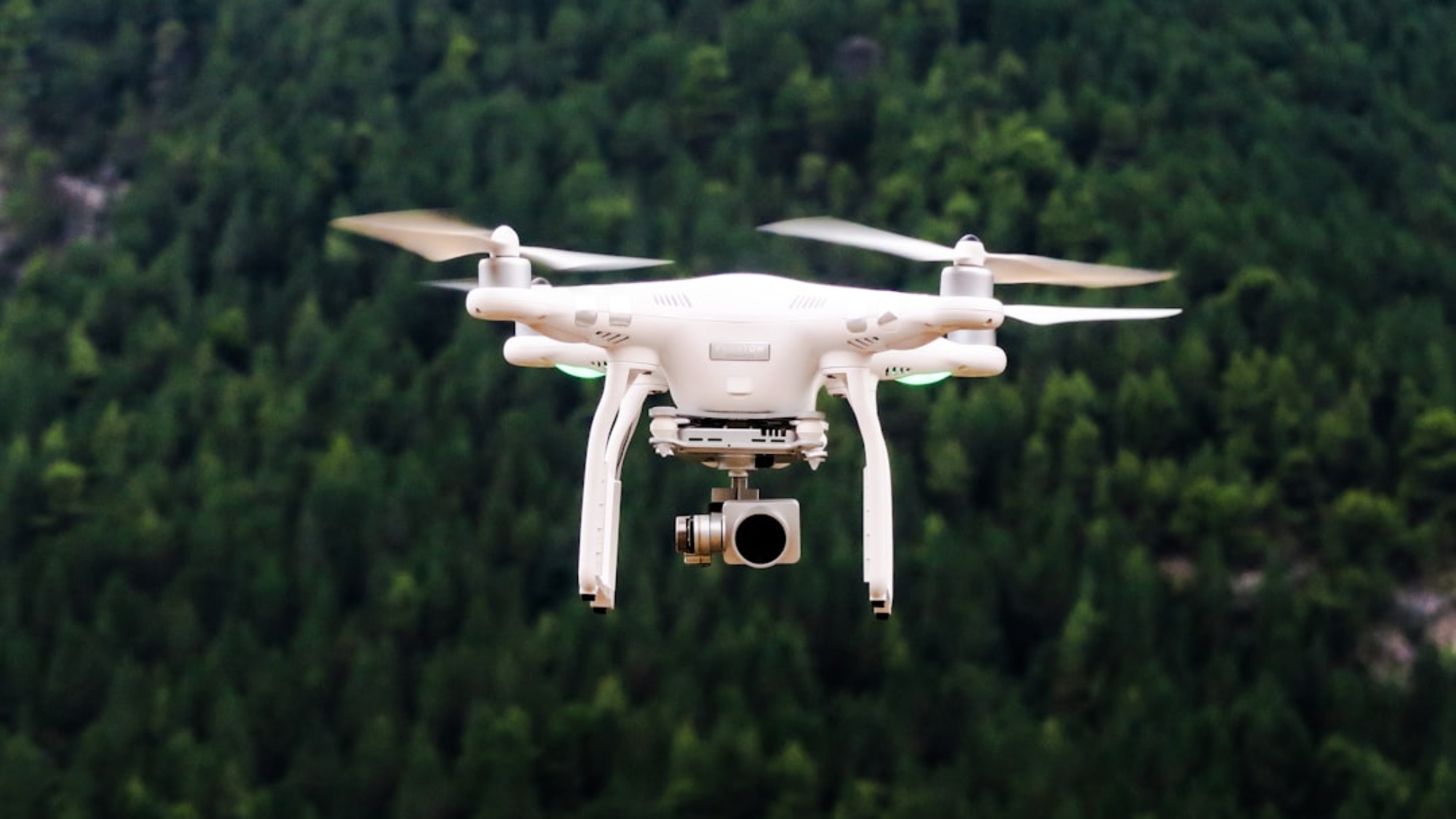Drones have become increasingly popular in recent years, with more and more people taking to the skies to capture stunning aerial footage and explore new perspectives. However, like any piece of technology, drones are not immune to issues and malfunctions. That’s where drone repair comes in. In this blog post, we will explore some of the most common issues faced by drone owners and provide solutions for fixing them.
Battery Issues: How to Diagnose and Solve Them
One of the most common issues faced by drone owners is battery problems. Signs of battery issues include a sudden drop in flight time, difficulty in charging the battery, or the drone not turning on at all. There are several causes for battery issues, including overcharging, undercharging, or leaving the battery unused for extended periods.
To diagnose battery issues, it is recommended to check the voltage of the battery using a multimeter. If the voltage is significantly lower than the rated voltage, it may indicate a problem with the battery. Additionally, inspecting the battery for any physical damage or swelling can also help identify battery issues.
Solutions to battery issues include properly charging and discharging the battery, avoiding overcharging or undercharging, and storing the battery in a cool and dry place when not in use. It is also important to follow the manufacturer’s guidelines for battery maintenance and replacement.
Motor Problems: Troubleshooting and Repairing
Motor problems are another common issue faced by drone owners. Signs of motor problems include abnormal noises coming from the motors, uneven performance during flight, or the drone not responding to control inputs properly. The causes of motor problems can vary from wear and tear due to regular use to physical damage caused by crashes or collisions.
To troubleshoot motor problems, it is recommended to visually inspect the motors for any signs of damage or debris that may be obstructing their movement. Additionally, checking the motor connections and ensuring they are securely attached can also help identify motor issues.
Repairing motor problems may involve replacing the damaged motor or cleaning out any debris that may be obstructing its movement. It is important to follow the manufacturer’s guidelines for motor replacement and to ensure that the new motor is compatible with the drone model.
Propeller Malfunctions: Causes and Solutions
Propeller malfunctions are another common issue faced by drone owners. Signs of propeller malfunctions include the drone not taking off properly, unstable flight, or the drone drifting to one side during flight. The causes of propeller malfunctions can range from loose propellers to damaged propellers or incorrect installation.
To diagnose propeller malfunctions, it is recommended to visually inspect the propellers for any signs of damage or wear. Additionally, checking the propeller connections and ensuring they are securely attached can also help identify propeller issues.
Solutions to propeller malfunctions may involve tightening loose propellers, replacing damaged propellers, or reinstalling the propellers correctly. It is important to follow the manufacturer’s guidelines for propeller replacement and installation to ensure proper functioning of the drone.
Camera and Gimbal Repairs: Common Fixes
Camera and gimbal issues are common among drone owners who use their drones for aerial photography or videography. Signs of camera and gimbal issues include blurry or distorted footage, shaky footage, or the camera not responding to control inputs properly. The causes of camera and gimbal issues can range from physical damage to software glitches.
To diagnose camera and gimbal issues, it is recommended to check the camera settings and ensure they are properly configured. Additionally, inspecting the camera and gimbal for any signs of physical damage or loose connections can also help identify camera and gimbal issues.
Common fixes for camera and gimbal issues may involve recalibrating the gimbal, updating the camera firmware, or replacing damaged components. It is important to follow the manufacturer’s guidelines for camera and gimbal maintenance and repair to ensure optimal performance.
GPS and Navigation Issues: Diagnosis and Repair
GPS and navigation issues can greatly affect the flight performance and stability of a drone. Signs of GPS and navigation issues include the drone drifting off course, difficulty in maintaining a stable hover, or the drone not responding to control inputs properly. The causes of GPS and navigation issues can range from poor satellite reception to software glitches.
To diagnose GPS and navigation issues, it is recommended to check the GPS signal strength on the drone’s controller or app. Additionally, ensuring that the drone’s compass is properly calibrated can also help identify GPS and navigation issues.
Repairing GPS and navigation issues may involve updating the drone’s firmware, recalibrating the compass, or finding a location with better satellite reception. It is important to follow the manufacturer’s guidelines for GPS and navigation troubleshooting and repair to ensure accurate positioning and stable flight.
Remote Control Problems: How to Fix Them
Remote control problems can greatly affect the control and responsiveness of a drone. Signs of remote control problems include difficulty in establishing a connection between the remote control and the drone, intermittent loss of control signal, or the remote control not responding to control inputs properly. The causes of remote control problems can range from low battery power to interference from other electronic devices.
To diagnose remote control problems, it is recommended to check the battery level of the remote control and ensure it is fully charged. Additionally, inspecting the remote control for any signs of physical damage or loose connections can also help identify remote control issues.
Solutions to remote control problems may involve replacing the batteries, ensuring that there are no obstructions between the remote control and the drone, or changing the frequency channel to avoid interference. It is important to follow the manufacturer’s guidelines for remote control troubleshooting and repair to ensure proper communication between the remote control and the drone.
Firmware and Software Updates: Importance and Procedure
Firmware and software updates are an important aspect of drone maintenance and can greatly improve the performance and functionality of a drone. Firmware updates typically address bugs and glitches in the drone’s software, while software updates may introduce new features or improvements.
To update the firmware and software of a drone, it is recommended to check the manufacturer’s website or app for any available updates. Follow the instructions provided by the manufacturer to download and install the updates onto the drone.
Benefits of updating firmware and software include improved stability and performance, enhanced features, and compatibility with new accessories or technologies. It is important to regularly check for updates and keep the drone’s firmware and software up to date to ensure optimal performance.
Physical Damage: Repairing Crashes and Collisions
Physical damage is a common occurrence for drone owners, especially for those who fly their drones in challenging environments or perform risky maneuvers. Signs of physical damage include broken propellers, damaged motors or arms, or cracks in the drone’s body. The causes of physical damage can range from crashes or collisions to rough landings or exposure to extreme weather conditions.
To diagnose physical damage, it is recommended to visually inspect the drone for any signs of damage or wear. Additionally, checking the motors, propellers, arms, and body for any cracks or breaks can also help identify physical damage.
Repairing physical damage may involve replacing damaged components, such as propellers or motors, or repairing cracks in the drone’s body using adhesive or epoxy. It is important to follow the manufacturer’s guidelines for physical damage repair to ensure proper functioning and structural integrity of the drone.
Maintenance Tips: How to Keep Your Drone in Top Condition
Proper maintenance is key to keeping your drone in top condition and ensuring its longevity. Here are some tips for maintaining your drone:
1. Clean your drone regularly: Use a soft brush or compressed air to remove any dust or debris from the drone’s body, motors, and propellers. Avoid using water or harsh chemicals that may damage the drone’s components.
2. Check for loose connections: Regularly inspect the drone for any loose connections, such as propellers, motor wires, or battery connectors. Tighten any loose connections to ensure proper functioning of the drone.
3. Store your drone properly: When not in use, store your drone in a cool and dry place to prevent damage from moisture or extreme temperatures. Use a protective case or bag to protect the drone from physical damage during transportation.
4. Follow manufacturer’s guidelines: Always refer to the manufacturer’s guidelines for maintenance tasks, such as battery charging and storage, firmware updates, and component replacement. Following these guidelines will ensure that you are taking the necessary steps to keep your drone in optimal condition.
Drone repair is an essential skill for any drone owner. By understanding common issues and their fixes, you can troubleshoot and repair your drone when problems arise. From battery issues to motor problems, propeller malfunctions to camera and gimbal repairs, GPS and navigation issues to remote control problems, firmware and software updates to physical damage repairs, there are various aspects of drone repair that you should be familiar with. By following proper maintenance tips and regularly performing maintenance tasks, you can keep your drone in top condition and enjoy many more flights in the future.


